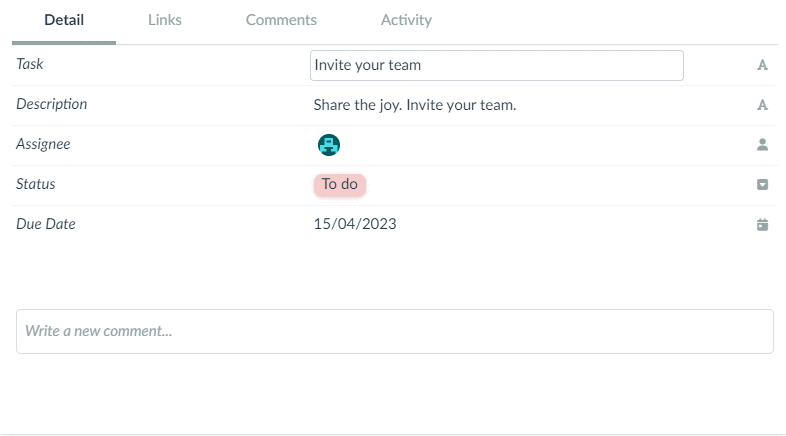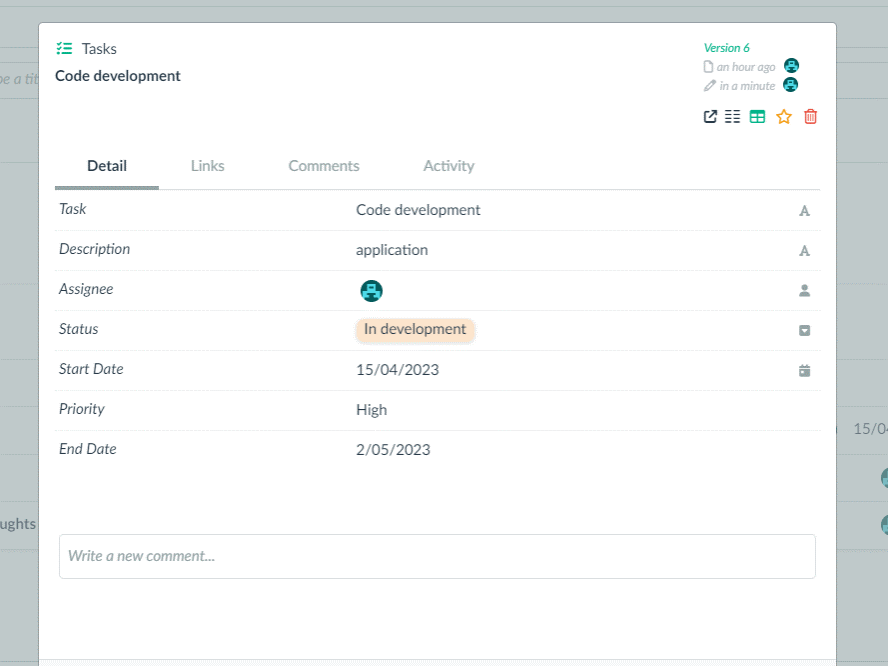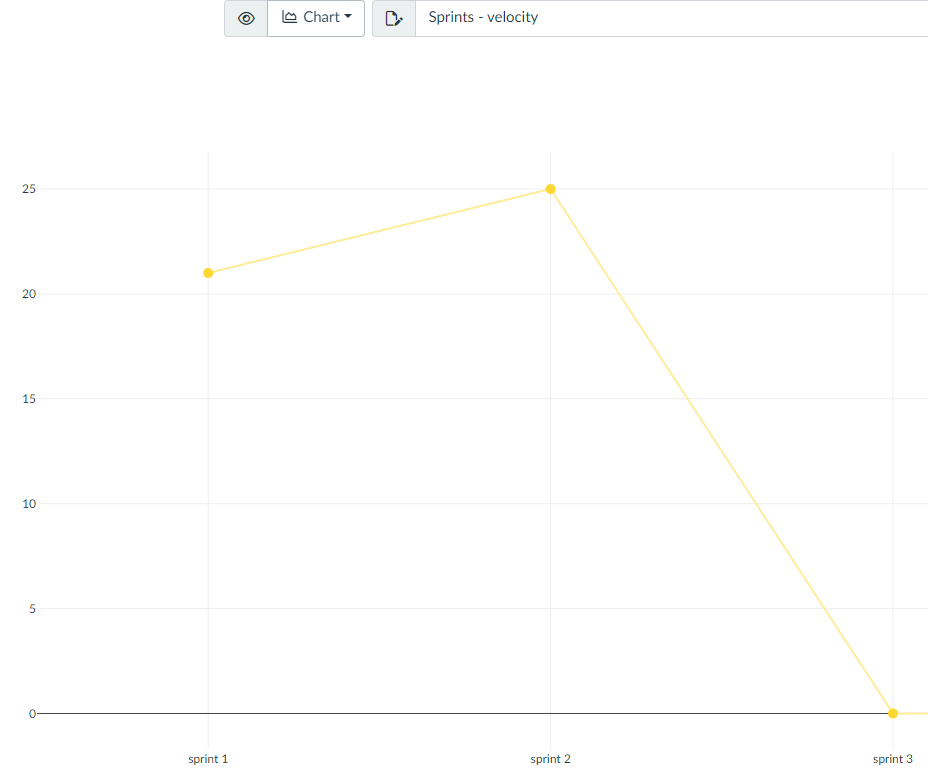We may not have the course you’re looking for. If you enquire or give us a call on 800600725 and speak to our training experts, we may still be able to help with your training requirements.
We ensure quality, budget-alignment, and timely delivery by our expert instructors.

Implementing the Scrum framework involves continuously working to improve the project's agility. However, organisations must use a precise planner to make this possible. Therefore, using a Scrum template becomes crucial for project teams.
A Scrum Template can help organisations perform better by narrowing down tasks and providing direction to Scrum teams. For instance, the 16th State of Agile survey report states that 87% of respondents using Scrum tools at the team level reported Scrum Templates as advantageous in successfully completing their tasks. So, it is the right time for you and your organisation to benefit from the Scrum framework using its templates.
Not sure what a template in Scrum is? Worry no more. Read the blog to learn about Scrum templates, their features and benefits.
Table of Contents
1) What is Scrum?
2) What is a Scrum Template?
3) How do Scrum Templates contribute to the success of an Agile business?
4) 10 Scrum Templates to consider for your team
5) What's a Daily Scrum Template?
6) Features of a template in Scrum – Explained
7) What are its benefits?
8) Conclusion
What is Scrum?
Scrum is an extremely popular Agile methodology frequently used in organisations for Software Development and Management practices. It allows organisation and its managerial figures to bring greater efficiency to working process. This methodology is extremely popular in working environments that tend to have complex procedures. Agile aids these environments by simplifying the workflow and making the delivery of output overall faster.
Scrum can be complex in nature, thus relatively new teams without experience can have difficulties in lack of a guiding figure. These guiding figures are the designated positions in any work environment where Scrum is implied. Some of these roles include Scrum Master roles and responsibilities who facilitates the Scrum process within a team. Another example of such a role is Product Owner who represents the stakeholders of a project and is responsible for all the product requirements.
While Scrum Master and Product Owner are well established role within the Scrum methodology applications, there is another role that is responsible for important tasks. The Development Team is often considered the life blood of a Scrum based environment, responsible for Software Development Life Cycle (SDLC). This team stands as a collective entity, capable of self-organisation, where team members collaborate with each other to meet a target within in a limited time.
Gain detailed knowledge of Scrum Master techniques with Scrum Master Certification!
What is a Scrum Template?
Every organisation requires simplifying their work process to get better results. In such a scenario, a Scrum Master becomes their helping hand. Scrum Template provides a visual way of working for the Scrum Teams. Here, each member can plan every sprint, set a timeline for their tasks, regularly check their progress, and keep track of backlogs.
Additionally, they can set priority works, manage client orders, retrospect, and more. Therefore, templates do not merely help manage sprint tasks but also help direct the entire Agile project. It comprises various sections that allow the user to mention each task and even a whole Sprint in a simplified, structured and descriptive manner. The various sections are as follows:
1) Roadmap
2) Scrum Board
3) Add Item
4) Backlog
5) Project Pages
6) Sprint Calander
Apart from these sections, a Template in Scrum can also contain other divisions depending on the teams' requirements. These may include Call Sections for each Scrum Team, a Feedback Section to review the product and test and code Reviewing Sections.
How do Scrum Templates contribute to the success of an Agile business?
Scrum Template is a valuable tool in Scrum framework that allows teams to bring efficiency, speed and consistency. These templates are responsible for reducing potential errors and enhancing the overall results. Here are some ways, in which Scrum Template helps Agile Business in detail:
Process standardisation
Scrum Templates have a standardised format for events and artifacts artefacts such as product and sprint backlogs and sprint planning. This standardised format has helped the Scrum methodology bring consistent results when applied in an Agile environment. It achieves so by making sure the consistent format followed by all team members avoids any form of confusion.
A standardised process has the added benefit of removing the need to recreateing a template or procedure from scratch. This readymade template is utilised in every single sprint, bringing consistency to the overall work.
Time optimisation
Scrum Template, being ready- made format of artefacts in Scrum, allows team members to immediately utilise it. The alternative to this would be creating a new format from scratch every time a new project is initiated. Not only does this helps the Scrum team save a lot of time and hassle of creating a format from scratch, but an in-use template is commonly tested and verified.
The pre- verified template is less likely to cause unpredictable errors, thus reducing the time taken on rectifying to rectify the potential. As a result, Scrum Template optimises the amount of time required for getting a task done.
Error reduction
Scrum templates tend to have limitations, as they are prebuilt and ready to implement, rather than being created from scratch. As a result, it needs to be updated over time to keep it versatile;, however, it also has its respective benefits. A limited to set of uses also results in a limited set of potential errors.
Scrum templates tend to be tested over time, making them less and less likely to cause errors. It allows the team members to root out the cause of issue if one does take place occasionally. The process of error detection is much easier this way than it would be in the absence of the scrum template.
10 Scrum Templates to consider for your team
Scrum Templates are pre- documented in nature., Aas a result, there are various kinds of templates. Each of these templates hasve their its respective uses, thus they fit particular use cases. They provide a consistent and structured approach in Agile project management, increasing the efficiency. Some common examples of such templates are as follows:
1) Template for Agile Scrum Management
This template can help Project Managers with various tasks such as test management, sprits, backlog tracking and backlogs. It includes all the vital components of a Scrum workflow, simplifying the work drastically. This template is particularly useful for scenarios where team members need to keep track of particularly complex projects.
This template has a “How to get started” doc file built within it, simplifying the learning process for team members who have started using this template recently. This file covers the details of the template’s features, giving guidelines on how to use them efficiently, and making the best out of this template.
2) Template for bugs list
Here is a template for bug detection, allowing team members to track potential bugs and take care of them. This template has a clear and coherent interface with a set of tools specifically designed for bug management within a Scrum- based work environment. This tool also allows team members to record any vital information during the workflow, allowing it to be used later.
This tool is an excellent choice for improving the bug identification process within a Scrum team. It lets the team members identify and prioritise based upon on different criteria. Some of these criteria include the priority, severity, and the person responsible for the bug. Additionally, it also shows the status of the bug, letting team members know if it has been resolved or not.
3) Template for bugs priority
Developers end up dealing with countless bugs in their journey of software development, each being a nuisance that affects the working of the final product negatively. However, not all bugs are the same;, while some may cause mild inconvenience, others can kill the product’s entire functioning. This is where this template made for nug management comes in, allowing developers to label these bugs based upon how fatal they are to a system and tackle them in the respective order.
4) Template for Scrum Board
This template is usually an additional view of the Agile Management Template. Scrum board essentially refers to a dashboard used within the Scrum workflow that allows all the team members to see the set of tasks to accomplish. It helps team members keep a track of the progress and remaining work throughout the process of working on a project.
The Scrum Board Template is divided into different columns, allowing for easy detection of a task’s status. Normally, Scrum Boards are physical in nature., Hhowever, as this is a virtual template, allowing a Scrum Team to easily integrate other technical features if necessary.
5) Template for backlog
Backlogs are an important part of implementing Scrum methodology in any working environment. This tool is dedicated to visualising the Scrum Backlog, making it much more visible for the team members, allowing for greater accessibility. What separates this template from others is how it prioritises the sprint backlog over the product backlog. This allows the team members to keep track of the current sprints.
6) Template for Sprint Planning
The Sprint Planning Template works in the same manner as the management template works for the execution phase of a project. It allows team members to carefully plan out sprints for the future. This allows the team to make sure each sprint goes as it is expected without any unexpected deviation from the plan.
7) Template for Active Sprint
This template is designed with the purpose of making sure any ongoing sprint’s status is easily accessible and visible to the entire team. The task within this template has different columns, each specifying vital information related to the sprint. Some of the categories within these columns include awaiting development, in development and ready for review. Within these categories, each sprint has information like time frame and goal, which make sure team members can stay up to date if a problem persists.
8) Template for Scrum Meeting
This template is dedicated to Daily Scrum Meetings, which allow a Scrum team to assess the accomplished targets and discuss the work that is still left. This is a vital part of Scrum workflow, and it accounts for any possible new roadblocks in the work, accounting for it and adjusting the work and time limit accordingly, as well as producing necessary solutions.
This template simplifies the process of planning, executing, and tracking these Scrum meetings. As a result, the team members can add details of their accomplishments since the previous meeting, with more efficiency.
9) Template for Sprint Events
This template is extremely useful for centralising the work- revolving sprint management process. This helps the team members in tracking the changes made throughout the events and learnings that take place during a sprint. Additionally, it allows people to make a document which stores these changes;, this document can be shared with stakeholders to inform them and keep them updated about the meetings.
10) Template for capacity planning
The managerial roles within a Scrum environment, such as a Scrum Master, often struggles with complex project management as well as the process of guiding the team members. This template is a saviour for such roles, as it aids Scrum Masters in simplifying the daunting management process and work distribution. This streamlined process makes the overall process of Scrum work flow a lot more for serialised and efficient.
What's a Daily Scrum Template?
Daily Scrum template refers to pre-formatted tools that aid a team in the process of simplifying Daily Scrum Meetings. Some details on this template are as follows:
Daily Scrum Template
Also known as Daily Scrum Meeting templates in certain cases, this template can give you an over all view of an entire sprint. This allows you to detect when the sprint started, what is its expected end goal, where the deadline ends and the status. This template normally has an import option allowing you to integrate necessary material from other software or tools such as Jira.
You can use this template to integrate various data, such as a camera stream or the names of team members during the meeting. These visuals add more context to the daily reports of team members, focusing on the roadblocks the team might be facing at work.
Features of a Template in Scrum – Explained
Templates in Scrum have multiple uses that can help the teams plan a specified sprint and even future sprints. These templates can benefit organisations and individuals only if they fully utilise them. Here’s a list of some uses of Templates in Scrum that can help ease the Agile Process:
Common platform for the entire team
The templates provide a common platform for the entire team to regularly update their work and collectively plan for the upcoming sprints. Further, using this tool, the Scrum Master can schedule stand-ups and make notes of user stories for future sprints. Thus, Scrum’s easy-to-use and easy-to-share project planning template can benefit the whole team in one go.

Listing tasks for each member
While the entire team can work using the templates in Scrum, each member can also add, delete, and modify the tasks assigned to them. Therefore, handling individual tasks gets easier with personal dashboards for each member.
Using these dashboards, they can prioritise tasks and describe each user story more clearly. They can also regularly update their work, which is also visible to other team members.

Checking the velocity of sprints
The templates also offer the feature to keep track of the velocity of sprints. The entire team, along with the Scrum Master, can examine the working pattern of the last sprints. Therefore, it provides insight into the team’s work, strategies adopted during a specified Sprint, and team communication. It also assists the Scrum Master in planning future sprints accordingly.

Understand how to manage Agile projects using Scrum with our Managing Agile Projects With Scrum course now!
Sprint Calendars
Within a template, the teams can build their task calendars and a calendar for the entire Scrum Sprint. The calendars help the team complete their tasks within the given timeline. The teams also stay motivated to work, given that a sprint cycle usually lasts two to three weeks. Templates visually arrange each task of the sprint so that the entire team can keep up with the work to be done, work in progress and work done.

What are its benefits?
Using templates for Agile projects can benefit an organisation in various ways. Its visual way of working helps the teams to implement the Scrum Framework across different project environments quickly. But this is just one of its many unveiled advantages. So, let’s quickly look at how Templates in Scrum can benefit Scrum Teams:
1) Accessible communication for the team(s): Through the various sections, they can examine the position of their work while also communicating with each other on work updates.
2) Effortless integration: Teams can view the tasks assigned to each team member and integrate its various features on a single page.
3) Provides clarity: The templates visually organise the tasks, providing a clear picture to the team members about their work status. It tells them about the work to be done, the work in progress and the work done while also reminding them about the priority tasks.
4) Provides a single point of contact: The Scrum Master does not need to hold meetings. Regular stand-ups can also be facilitated through the templates, offering everyone a single point of contact.
5) Remotely available: There are times when teams are positioned at different locations. However, the provision of templates online can efficiently resolve the issue.
7) Easy to understand: A Template in Scrum is a relatively easy boat to sail. The teams can get hands-on templates as they use them to manage the sprint tasks.
8) Customisable: Templates can also be customised according to the requirements of the current sprint. The members can add, delete and modify various sections of the template whenever needed. For example, they can choose to add or remove the comment section from the template if they do not want any modifications.
Conclusion
Scrum Template is a visual way to direct a project by listing down the tasks in a simplified manner. It is one of the major supports for Scrum Team members and Scrum Masters as well as to examine the project's progress. Therefore, Templates in Scrum can benefit the entire project cycle.
Learn everything about Scrum Lifecycle Management and how to implement it. Join our Scrum Developer Training course now!
Frequently Asked Questions
Upcoming Project Management Resources Batches & Dates
Date
 Scrum Master Certification
Scrum Master Certification
Thu 20th Feb 2025
Thu 27th Feb 2025
Thu 6th Mar 2025
Thu 13th Mar 2025
Thu 20th Mar 2025
Thu 27th Mar 2025
Thu 3rd Apr 2025
Thu 24th Apr 2025
Thu 1st May 2025
Thu 22nd May 2025
Thu 5th Jun 2025
Thu 19th Jun 2025
Thu 3rd Jul 2025
Thu 17th Jul 2025
Thu 31st Jul 2025
Thu 14th Aug 2025
Thu 11th Sep 2025
Thu 25th Sep 2025
Thu 2nd Oct 2025
Thu 9th Oct 2025
Thu 16th Oct 2025
Thu 23rd Oct 2025
Thu 30th Oct 2025
Thu 6th Nov 2025
Thu 13th Nov 2025
Thu 20th Nov 2025
Thu 27th Nov 2025
Thu 4th Dec 2025
Thu 11th Dec 2025
Thu 18th Dec 2025






 Top Rated Course
Top Rated Course



 If you wish to make any changes to your course, please
If you wish to make any changes to your course, please


